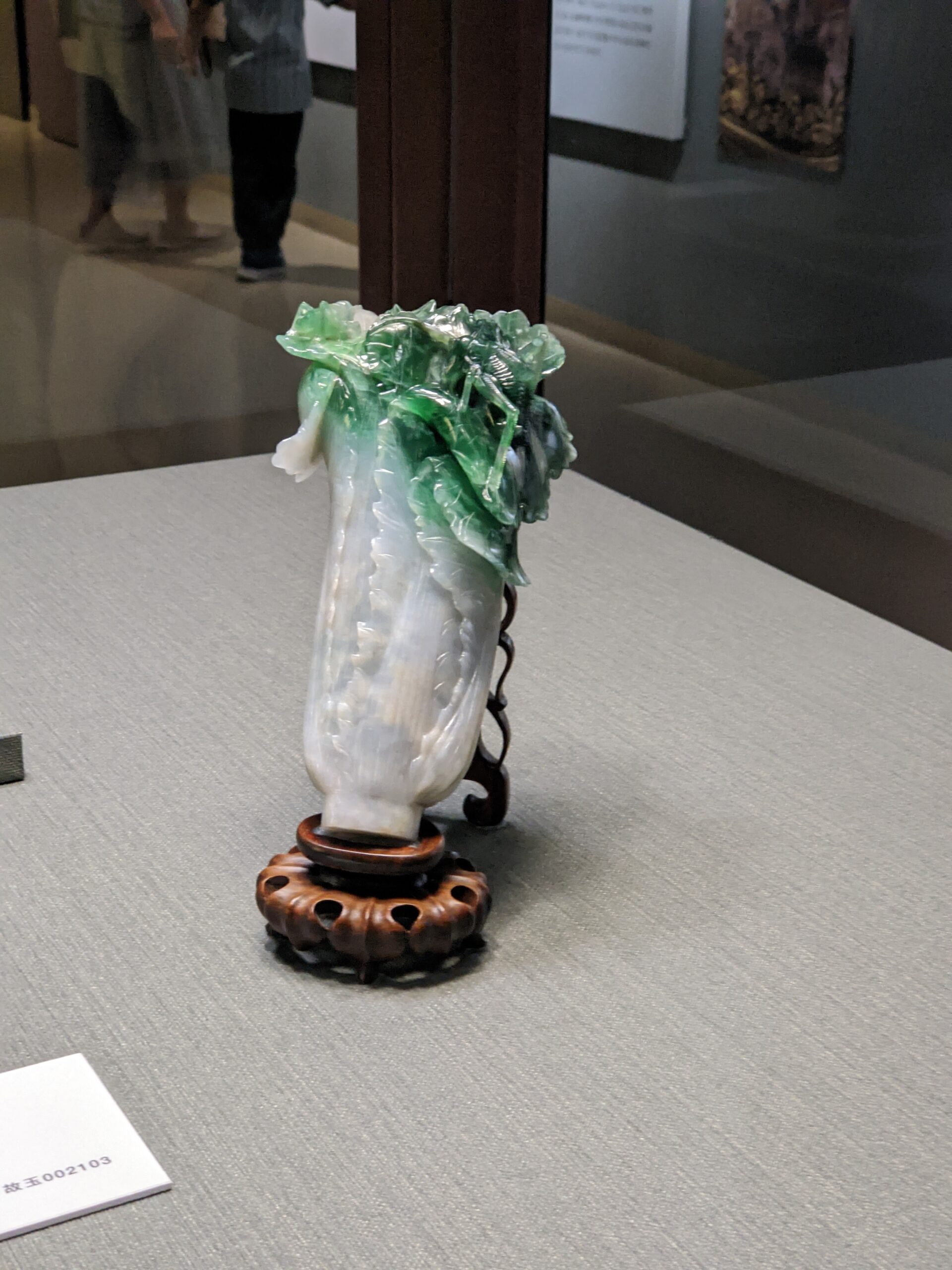
Political History at The National Palace Museum
I am more than late on this entry— sorry about that! It just went by so fast; I got caught up in the coming week. But I think that’s a sign of me enjoying my stay here. My weekends are always packed with surprise events that I want to include in my journals.
This weekend in particular was a surprise, after returning from a convention my roommate asked if I wanted to visit the National Palace Museum with her language partner. I had been wanting to go so I accepted in a heartbeat.
We had gone during a day where it was raining relentlessly— strategically. With the more rain, the less people there would be visiting the palace. We also saw the grand jewel of the museum on the third floor first, the Jade Cabbage 翠玉白菜. This piece and its paired Meat Stone 肉形石 are considered the most important in the entire museum, despite the fact that they are not nearly as old or as valuable as many of the other pieces. Still, I found the baicai beautiful. I’m a huge fan of Jade and jade carvings.
What I found most interesting was the realization that much of the artifacts, older than I could ever imagine, were taken from the mainland in the rush to escape to Taiwan. This was especially true when we entered an exhibit that showed the luxurious lifestyle of the Qing dynasty upper-class through their furniture. I had thought to myself, “this was the remains of someone’s home, they had packed all that they could maybe in a day or a few hours and took off maybe thinking they’d never see their home again.”
When I say taken from the mainland, I don’t mean that in a negative way— as if these artifacts should be ‘returned’ or something. I think they belong where they are. The politics of Taiwan and China makes their history hard to reconcile. Much of the exhibits discussed the origins of these historical pieces but all were from the mainland. I don’t think I saw once piece that was from the island itself.
It’s interesting in that regard. This palace is a remnant of a time when a portion of the population still considered themselves from China. They had family from there, friends from there, and it was just because of some civil unrest that they had to move away. Many thought that someday they’d be able to go back. But here we are today, where the younger Taiwanese generation sees themselves with no relation to the mainland and no care for the KMT 国民�
�. People see a separation between China and Taiwan, but the reality is that there are more layers to it.
This has gotten a bit solemn at the end, but I hope it was enjoyable, nonetheless. This topic has always been fascinating to me, and it was surprising to see it come out as strong as it did at this museum. Before visiting, life had been life, no one talked to me about such sentiments which is why I consider the National Palace a remainder of that period.
Next entry is coming sooner than you think!
